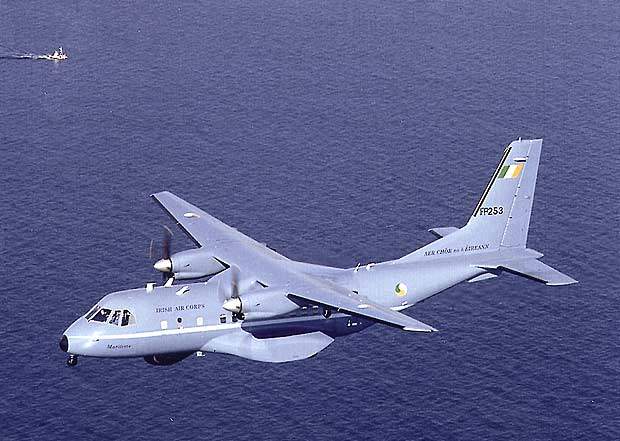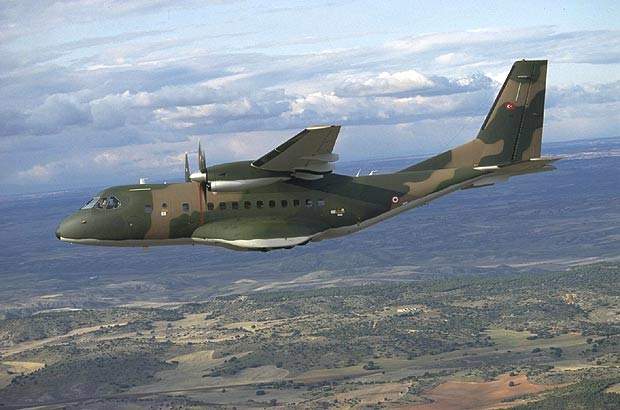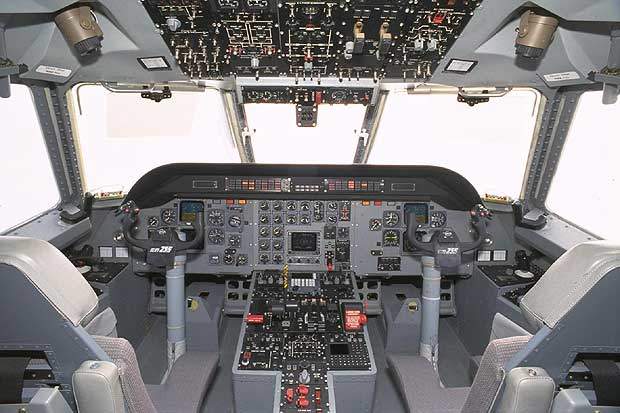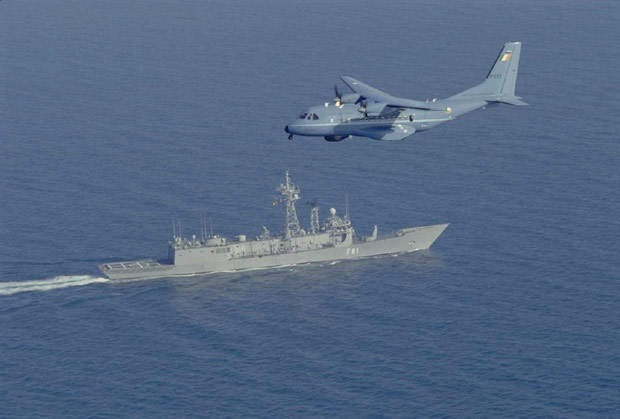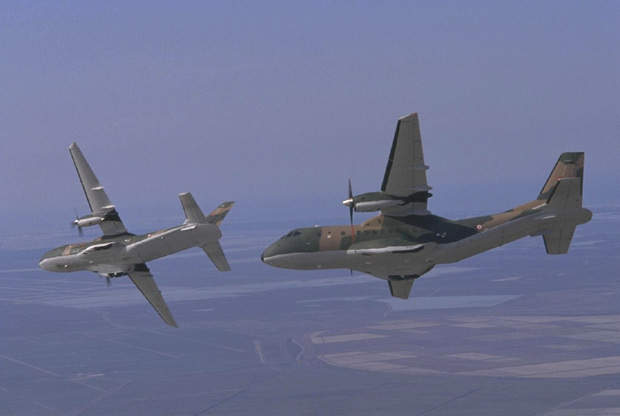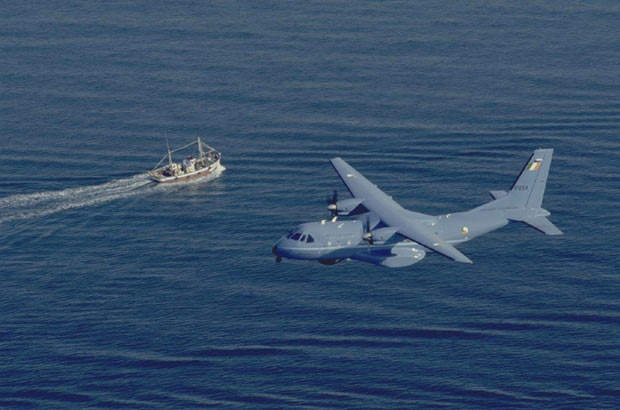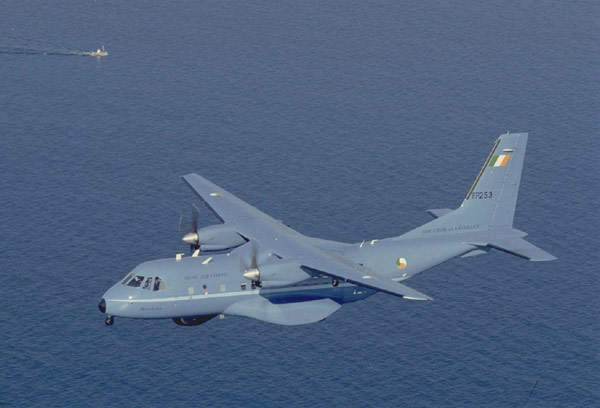The AirTech CN-235 maritime patrol aircraft has been developed in two versions with different avionics systems: the CN-235MP Persuader developed in Spain by CASA EADS and the CN-235MPA developed in Indonesia by Dirgantara (formerly IPTN). The maritime patrol variant is in service with: Spain, Ireland and Turkey (manufactured by EADS CASA) and Indonesia, Brunei and UAE (manufactured by Dirgantara).
AirTech, or Aircraft Technology Industries, was formed by CASA (now EADS CASA of Spain) and IPTN (now Dirgantara) of Indonesia to develop the CN-235 aircraft which has been built in many versions for civil and military missions. First flight of the CN-235 was in 1983 and the aircraft entered service in 1988. Over 230 of all versions of CN-235 are in service and have accumulated more than 500,000 flight hours.
CN-235 maritime patrol aircraft orders
In July 2002, the Lockheed Martin / Northrop Grumman team was awarded the contract for the US Coastguard’s Deepwater programme, which includes 35 new fixed-wing maritime patrol aircraft. The USCG selected the EADS CASA CN-235-300M for this requirement.
In February 2004, prime contractor Lockheed Martin received a contract to deliver an initial two CN-235-300 maritime patrol aircraft. A further five aircraft were ordered in May 2007. The first aircraft, designated HC-144A Ocean Sentry, was delivered to Lockheed Martin, for integration of the mission systems, in December 2006. The sixth was delivered in November 2008. All 36 aircraft are to be in service by 2017.
In December 2002, the Columbian Navy ordered two CN-235 for patrol and anti-drug trafficking missions.
In April 2005, Venezuela ordered two CN-235 maritime surveillance aircraft and in January 2006, Thailand placed an order with Dirgantara for ten aircraft, six for the Ministry of Defence and four for the Ministry of Agriculture.
In December 2007, Spain ordered two CN-235 maritime patrol aircraft for the Guardia Civil, for delivery 2008–2009.
One CN-235 MPA aircraft was delivered by Dirgantara to the Indonesian defence ministry in June 2008. Three more aircraft were ordered by the Indonesian Navy in December 2009.
In June 2010, two CN-235 maritime patrol aircraft were delivered by Airbus to the Mexican Navy.
CN-235 MP / MPA aircraft design
The aircraft is of conventional semi-monocoque design and mainly aluminium alloy construction. Composite materials, Kevlar and glass fibre have been used extensively in the construction of the wing and tail leading and trailing edges, engine nacelles and the nose radome.
Mission systems
The two manufacturers, CASA EADS in Spain and Dirgantra in Indonesia, supply the aircraft with different mission systems. The Spanish developed CN-235 MP Persuader is fitted with the Northrop Grumman APS-504 (V) 5 radar. The Indonesian developed CN-235 MPA is equipped with the Seaspray 4000 from BAE Systems, the AN/APS-134 from Raytheon or the Ocean Master 100 from Thales.
CN-235 MP Persuader
The Spanish-built Persuader has been in service with the Irish Air Corps since 1991. Spain has ordered four Persuaders. In 1998 Turkey ordered six for the Turkish Navy and three for the Turkish Coast Guard, the first of which was delivered in November 2001.
The aircraft are based at Cengiz Topei, the Turkish Naval Air Base. The Coast Guard is under the operational control of the Turkish Ministry of the Interior, but in times of crisis or war, the coastguard is under the command of the chief of the Turkish Navy. Turkey negotiated an agreement for the assembly of the aircraft for Turkey and for export by Turkish Aerospace Industries Inc (TAI) at Ankara. TAI had previously manufactured 50 transporter versions of the CN-235 between 1991 and 1998.
The aircraft is equipped with a FLIR Systems FLIR-2000HP forward looking infrared night vision system. The FLIR pod is mounted under the nose of the aircraft. Northrop Grumman (Litton) supplied the AN/ALR-86(V) electronic support measures and the APS-504(V)5 radar.
Nine Turkish Navy and coastguard CN-235 aircraft are to be fitted with the Thales AMASCOS system, which also equips Indonesian Air Force aircraft. First flight of the CN-235 for the Turkish Navy took place in December 2008.
CN-235 MPA
The Indonesian Ministry of Defence and Security ordered 24 CN-235 aircraft, including six for the Indonesian Navy maritime reconnaissance squadron and three for the Indonesian Air Force.
THALES and IPTN signed a memorandum Of agreement in May 2000 for the supply of three CN235 aircraft manufactured by IPTN and equipped with AMASCOS from Thales Airborne Systems, to the Indonesian Air Force. The AMASCOS airborne maritime situation control system includes the Ocean Master search radar produced by Thales and EADS Deutschland, the Elettronica ALR 733 radar warning receiver, the Chlio thermal imager developed by Thales Optronique, the Gemini navigation computer from Thales (formerly Sextant) Avionics and the AN/ASQ-508 magnetic anomaly detection (MAD) system from CAE.
There are three hardpoints under each wing that can carry Harpoon anti-ship missiles. The Indonesian maritime patrol version can be fitted with two mk46 torpedoes or Exocet M-39 air-launch anti-ship missiles.
CN-235 MPA for Brunei
Brunei has ordered three Indonesian developed versions of the aircraft. Boeing is contracted as the Argo Systems Integrator. The aircraft are equipped with an FLIR Systems AN/AAQ-21 Safire FLIR, a BAE Systems Sky Guardian electronic support measures electronic warfare system and a AN/APS-134 radar. The information friend or foe system fitted on the aircraft is the Cossor 3500 IFF.
CN-235 MPA for UAE
The United Arab Emirates placed an order for four Indonesian developed CN-235 MPA aircraft in 1998. The aircraft is equipped with the Thales AMASCOS 300 with Ocean Master 100 radar for surveillance, maritime patrol, anti-surface and anti-submarine warfare.
HC-235A
The HC-235A aircraft for the US coastguard have a Rockwell Collins avionics suite, including four 6in×8in active matrix liquid crystal multi-function displays and communications, navigation and surveillance systems to meet air traffic management requirements.
Sensors include FLIR Systems Star Safire III thermal imaging system and Telephonics APS-143C search radar.
Navigation
The aircraft is equipped with a Trimble TNL7900 Omega global positioning system and a Northrop Grumman (formerly Litton) LN92 ring laser gyroscope inertial navigation system.
Engines
Two General Electric CT&-9C3 turboprop engines each developing 1,305kW, are wing-mounted in composite nacelles. The engines produce 1,394kW with automatic power reserve. The engines drive Hamilton Sundstrand 14RF-21 four-bladed, constant speed, full feathering, reverse pitch propellers, diameter 3.35m. The propellers are of glass fibre construction with a metal spar and urethane foam core.

